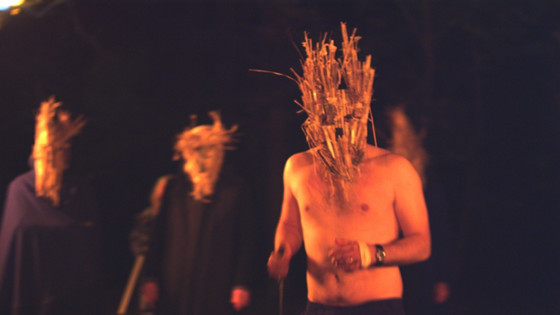
At the root of the horror genre lies a proclivity towards hyperbole in manifesting our fear of the unknown. For writers like David Cronenberg, domestic dramas about custody battles and marital unrest are simply too inexpressive to represent the dismal reality of dissolving the family unit or falling out of love.
Such emotions, instead, deserve to be treated with shocking visuals depicting bodily decay and irreparable mental defilement centered around the exploitation of an unfamiliar – or monstrous – physicality. These allegorical fables are the filmic equivalent to poetry in their ability to communicate complex feelings despite the severe limitations of their medium.
There are a number of criteria a horror movie can meet to attain “cult” status, and the devisiveness of such multifaceted plots as Cronenberg’s often propels movies initially panned to warrant induction into the cult canon.
Many critics were slow to accept the filmography of David Lynch on the basis of his films’ overwhelming nonsensicality before rediagnosing his abstract thinking as a commendable stab at articulating the unconscious. In the tradition of John Waters and Kenneth Anger, the label “cult” also proves synonymous with “taboo,” as the subjects of these filmmakers’ work dispute the notion of film’s compatibility with television’s ratings-conscious, family-minded hospitality.
But one subject that’s often overlooked in the culture of cult horror, ironically, is religious deviance – or cults. With the exception of Rosemary’s Baby and his Satanic offspring, the horrific glimpse into oppressive theological environs and its resulting disparity in spirituality are rarely considered when taking stock of the pulpy subculture, as the sensational subject matter can easily be read as superficial biography of the nonsecularly-ensnared.
As an exercise in analyzing the inherent terror in novel self-doubt, the following ten movies exemplify the secretion of alternative theologies as the mental virus propelling their hosts towards self-destruction.
1. Society (dir. Brian Yuzna, 1989)
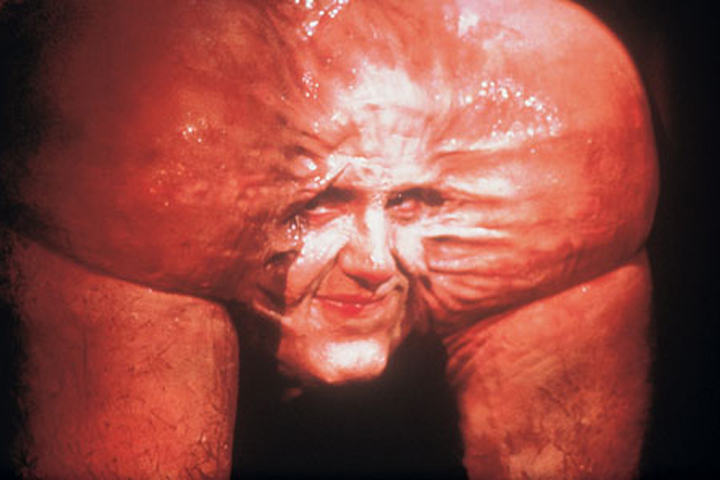
The Victim: Bill Whitney, dysphoric high school socialite increasingly at odds with his privileged aristocratic environs
The Cult: A perfectly groomed, maliciously exclusive, incestuously capitalistic society
With Jim Jones as a godhead for a paranoid anxiety inflamed by the outside world’s prospective intervention, most cults operate covertly for the sake of avoiding unneeded attention from organizations capable of forcibly disbanding them. Yet others have become so ingrained in our culture that they operate on a level of transparency undetectable enough to grow into a major social force and a worldwide commercial movement.
As thinly-veiled allegory, Society offers a gruesome visage into the cult of high society from an unsuspecting outcast raised within a family of prominently-embedded figures.
As Bill begins to heed the conspiratorial cues culminating in a shocking spectacle at his sister’s coming out party, he slowly begins to develop a frantic feeling of otherness separating him from friends, relatives, and hired mental health professionals. In a clearcut case of nature overcoming nurture, Bill finds himself rescued by an instinctive rejection of an artificial environment constructed by money-grubbing elitists with more than just financial ties to each other.
In depicting a teen’s harsh awakening to society’s disgusting preoccupation with formality and capitalism’s orgiastic back-scratching, Society ultimately offers hope for the ingrained (though adopted) Child of God to make a clean getaway.
2. Santa Sangre (dir. Alejandro Jodorowsky, 1989)
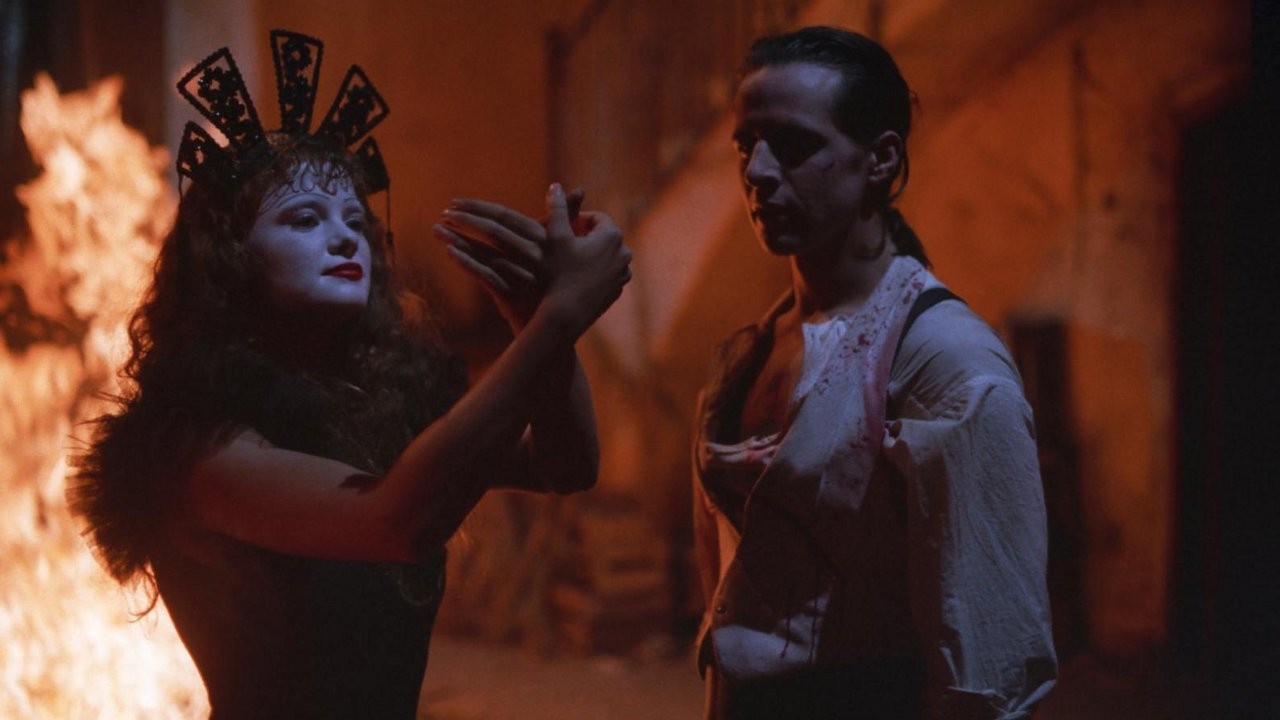
The Victim: Fenix, a young magician reared by a dysfunctional carnival
The Cult: If not the carnival itself, his mother’s assembly of women worshipping an armless rape victim
In order to recognize the abnormality of a cult at an early age, it’s imperative to experience some semblance of normalcy to be able to identify a red flag when it arises. But when your father is a knife-thrower, your mother a tightrope-walker, and your closest friends clowns, there’s very little conventionality to grasp onto when coming-of-age in a community intentionally amputated from a judicious society.
On the surface, the deity worshipped by Fenix’s mother appears to be as harmless as she is armless, proving merely a grotesque variant of the Virgin Mary who’s suffered at the hands of men rather than blessed by the grace of God. But as a religious role model, this patron saint offers her followers significantly less than the Way, Truth, and Light, and instead provides a fatal self-fulfilling prophecy for her most devout follower, whose limbs are violently shed by her philandering husband.
As it turns out, his mother’s cult isn’t a religious movement at all. Just as the “Holy Blood” in their temple is revealed to be red paint, the doomed narrative injected with spiritual significance is nothing but Fenix’s familial legacy foretold in a way that bestows reverence upon his mother’s caustic and undoubtedly secular influence. As a grown man, Fenix’s violent behavior isn’t carried out under the guise of martyrdom, but instead attests to his inability to escape the cult of childhood.
3. Crash (dir. David Cronenberg, 1996)

The Victim: James Ballard, extramarital sex enthusiast
The Cult: A conclave of extramarital car crash enthusiasts
While the film’s cult leader Vaughan strives to “reshape the human body by modern technology,” it’s the human mind that proves most malleable to his philosophy of sexual climax as more than just a little death. With his small clan of damaged humans seeking damaged cars, Vaughan lures James into a new boundaryless frontier where technology is an extension of man, death an extension of sexuality.
What sets Crash apart from the cults established in the majority of sectarian cinema (and aligns it with just about every other 20th century Cronenberg screenplay) is James’ immediate attraction to this fascinating splintered shard of humanity.
As if discovering a new religion after years of half-heartedly practicing pre-established faiths, James is suspiciously quick to enter the fold, spreading the word to his wife soon after. Ultimately what James drags his wife into is a confused doctrine of uninhibited gratification, refusing to be restricted by monogamy, humanity, or mortality.
Vaughan’s is a religion praising human achievement, equating technological growth with progress and infers the redundancy of human behavior in the presence of fully competent machinery. Despite its overwhelmingly bleak atmosphere, Crash’s agnostic view on human development is what’s most staggering about this movie about humans getting off to bent fenders,
4. Calvaire (dir. Fabrice Du Welz, 2004)
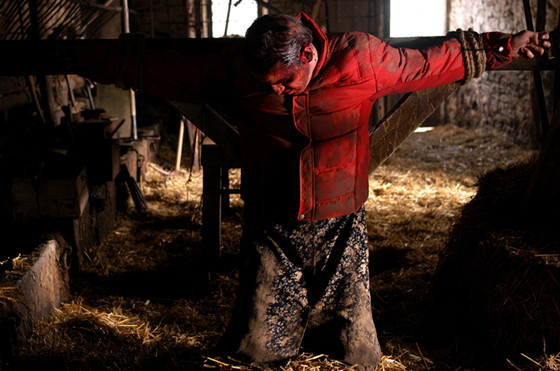
The Victim: Marc Stevens, travelling performer and tragic casualty of circumstance
The Cult: Backwoods Belgians suffering from an intense deficiency of companionship
After undergoing car trouble and being chaperoned to a ramshackle inn by exactly the type of person you most fear crossing paths with on a rainy night in an unfamiliar forest, Marc is introduced to the property’s suspiciously gracious proprietor, who receives his guest as penance for the recent abandonment of his wife.
Seduced by the prospect of the old man’s past as a fellow entertainer, present as a self-renowned mechanic, and (mostly) future as his ticket back to civilization, Marc spends the night despite his better judgement.
The man proves himself to be insane when he kidnaps Marc, forces him into his wife’s sun dress, and drags him into the forest in pursuit of a Christmas tree – until Marc’s reacquainted with the halfwit responsible for his present dilemma, who mistakes Marc for his lost dog. When word reaches a nearby bestiality-savvy village that the old man’s wife has returned, common sense fails the villagers as they mistake the half-shaven, dress-bestowed, and savagely-crucified Marc for an objectifiable female.
What could be written off as a sadistic sect of the Church of Euthanasia can more effectively be interpreted as an ethnographic glitch uniting a proximate population under insufficient living conditions. Upon the introduction of a new living creature in the neighborhood, the inhabitants’ desperation shades this flesh-and-bone slate with an image of companionship most suitable to their individual utter loneliness.
5. The House of the Devil (dir. Ti West, 2009)
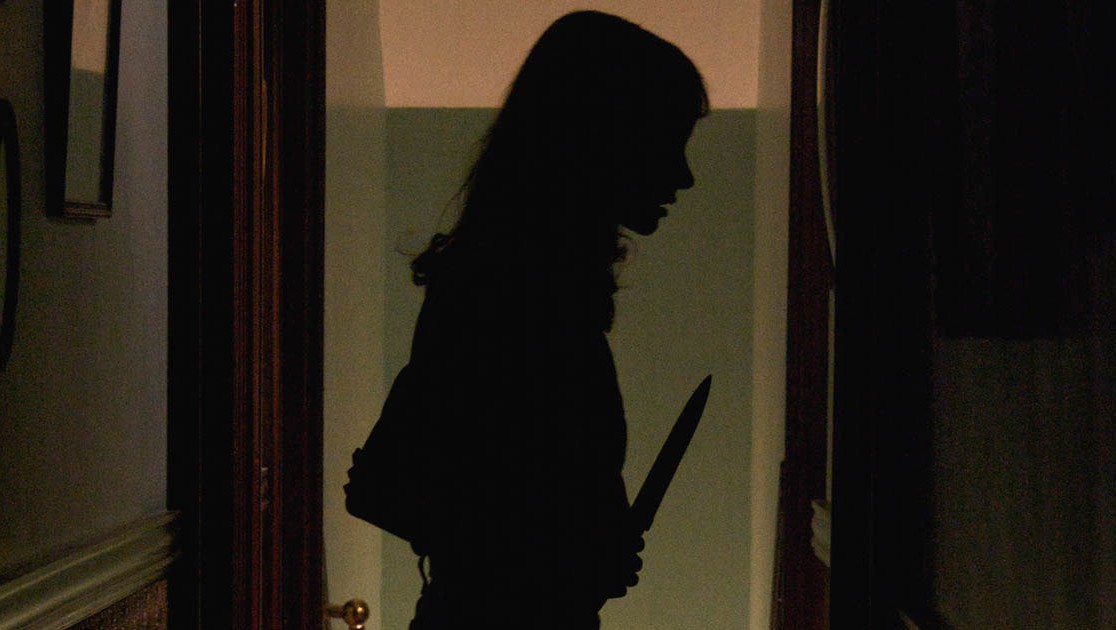
The Victim: Samantha Hughes, a strapped-for-cash college student who’s evidently never seen a slasher flick
The Cult: Good old fashioned Satanism
Harkening back to a period when cults were beginning to wane in popularity and horror films were reaching their peak, The House of the Devil distinctively replicates the era with a foremost dedication to presenting 1983 as accurately as possible.
While a 95-minute homage to horror’s glory days reeks of gimmick, the intersection of these cultural touchstones paints an ideal setting for a single white female to become the victim of a Satanic rite under the false pretense of a lucrative babysitting gig in an inaccessible suburb.
Although Samantha’s waist-hugging jeans and dependence upon payphones are specific to a bygone era, her submission to stupidity (the first of LaVeyan Satanism’s nine sins) is characteristic of the universal naivety performed by desperate teens in need of financial solutions to the new prospect of adult problems.
Our incomprehensibly warm relationship with such anonymous websites as Craigslist posits the cult’s promise of deus (satanas?) ex machina against a contemporized panacea, as both offer situations with wildly unpredictable outcomes.